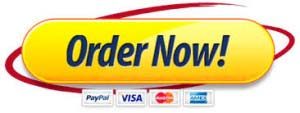PART 1
Using the Library and Web Resources, compare and contrast the functional project management model, the projectized project management model, and the hybrid project management model.
• What are the substantively different terms for the identical component?
• What are the differences and commonality among the three models?
PART 2
Discuss PERT, CPM and Gantt based on the following action items:
1. What are the purposes of each tool and circumstances for using each tool? Also consider whether these tools can be used independently or if they should ideally be used together.
2. What are the differences and similarities between the activity-on-node and activity-on-arrow (or activity-on-arc) diagramming techniques?
3. Propose and describe in text form a sample project that you would theoretically develop into a PERT diagram and Gantt chart. For example, “Building a car would consist of the following steps…”(briefly outline the steps as task statements). Postulate the critical path of your sample hypothetical project: What would be the critical path sequence?
PART 3
Review these scenarios:
• Your boss owns 2,000 shares of stock of one of the vendors, his wife works for another vendor, and he is on the procurement selection committee for the project.
• A third vendor in contention for this project has offered everyone on your team tickets to the hockey game this weekend in the company box with dinner included.
• Your stock broker is recommending the purchase of a technology mutual fund that contains stock belonging to several of the vendors in contention.
In your opinion, are there any ethics violations in these three scenarios? For each scenario, is there a way to avoid the ethics conflict? What do you see as the legal ramifications of your alternatives on the effectiveness of the project? Will the alternatives positively or negatively affect the effort?
PART 4
Briefly compare and contrast the various quality management processes and standards, such as Six Sigma, Total Quality Management, and ISO 9000. Your response should consider the following questions:
• What are the advantages and disadvantages of each quality management technique or standard?
• Which technique or standard, if any, is the best one to use?
• What are the potential drawbacks or negative consequences of implementing one of the quality management systems of your choice?
• Why is the measurement of quality critical to overall project success?
PART 5
Review the following articles:
Click to read 7 Tips for Rating and Evaluating Your Suppliers and Vendors
http://www.inc.com/guides/2010/12/7-tips-to-rate-and-evaluate-your-suppliers-and-vendors.html
Click to read Vendor Management Tips: Building Relationships
http://www.computerworld.com/article/2569487/it-management/vendor-management-tips–building-relationships.html
Answer the following questions:
• In your opinion, which of the identified criteria discussed in these articles are the most important? Rank/order the criteria according to the order of importance.
• What are the other criteria not listed in the article that you consider important and why?
• Is a scale a good method for scoring the criteria? If so, what kind of scale?
• What methods would you use for evaluating your listed criteria in a project management context?


